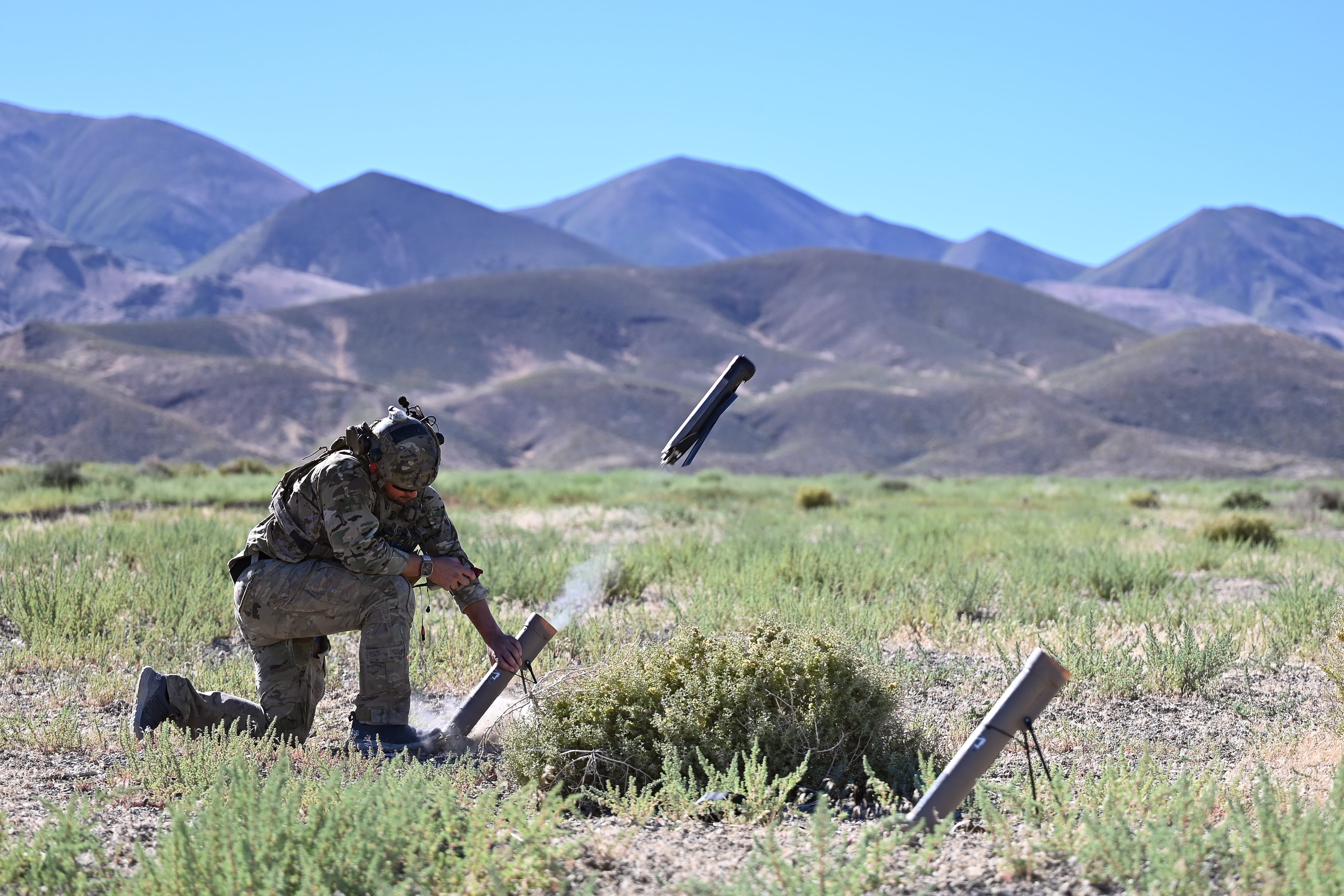ARLINGTON, Va. — The U.S. Marine Corps is interested in using unmanned submersibles or surface vessels as motherships for swarms of one-way drones, according to a top modernization official.
Real-world employment of such technology would mark a significant step forward for the Corps and the Department of Defense, as both seek to exploit uncrewed systems, autonomy and hard-to-detect weaponry in preparation for a potential fight with China or Russia.
“We’re focused very heavily now on organic precision fires, loitering munitions. There’s a lot of areas there that I think we can accelerate, because industry is, clearly, cutting the path for us,” Lt. Gen. Karsten Heckl, leader of Marine Corps Combat Development Command, said at the Sept. 6 Defense News Conference in Pentagon City. “The idea of loitering munitions coming off unmanned surface vessels, loitering munitions coming out of unmanned underwater vessels — you can let your imagination run wild, and we’re pushing the envelope on all of those.”
The wide-ranging application of drones — for spying and targeting, and for one-way trips culminating in an explosion — has been observed in the Russia-Ukraine war. So-called exploding drones target vehicles and infantry alike, often with deadly effect.
While Marines have yet to test a combination of USV, UUV and attack drones en masse, trials are possible in the near future. Boeing’s extra-large Orca could be a candidate, according to Heckl. The company in July published footage of an Orca beneath the waves, its mast extended, but provided few additional details.
RELATED

“We’re not experimenting, but we will,” Heckl told reporters at the conference. “Imagine a fully autonomous UUV that can go out, get to within X range of an area, surface and launch thousands of loitering munitions that are fully autonomous, and then slip back below the surface.”
The Corps’ much-discussed revamp, Force Design 2030, includes a call to quickly develop and field loitering, swarming munitions.
Gen. Eric Smith, the acting commandant, on Wednesday said the Corps will “continue to add drone technology, autonomous systems, artificial intelligence” into its mix. A squadron this year became the only Marine unit in the Indo-Pacific to reach an early operational milestone with the General Atomics MQ-9 Reaper, Marine Corps Times reported.
“The MQ-9s? Boom, in the Pacific. We said we were going to put them in the Pacific, and they’re there,” Smith said. “They’re also in Central Command, doing some pretty robust work.”
Defense News reporter Megan Eckstein contributed to this article.
Colin Demarest was a reporter at C4ISRNET, where he covered military networks, cyber and IT. Colin had previously covered the Department of Energy and its National Nuclear Security Administration — namely Cold War cleanup and nuclear weapons development — for a daily newspaper in South Carolina. Colin is also an award-winning photographer.





